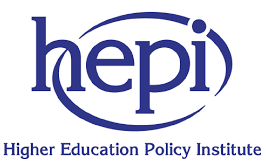Higher education is changing. And so is the student experience. For a long time, students had to make two key decisions when applying to enter higher education: choosing their subject and choosing their university. But today, the diversity and flexibility of higher education brings a lot more decisions for potential students to make, including: whether, when, why, what, where and how to study. Do they make the right decisions? Do they get any help in making them? And what do they get from their flexible higher education?
The changes also bring challenges for higher education institutions, in deciding what to provide and how to provide it, and in supporting students to travel along their learning pathways, preventing them from getting lost, and enabling them to change direction if they decide they need to arrive at a different destination.
Several international projects I’ve been working on have asked some of these questions, although have not always answered them. But research can always be useful in identifying ‘things we don’t know’ as well as ‘things we do know’! One of my projects was with UNESCO on ‘Flexible Learning Pathways in Higher Education’, another was an EC Erasmus project on ‘Complex Trajectories in Higher Education’, and the third was a British Council project on ‘Microcredentials: a comparative study of Turkey and the UK’. I can draw on some of this work now. Let’s start with the ‘why’ and the ‘when’ questions.

